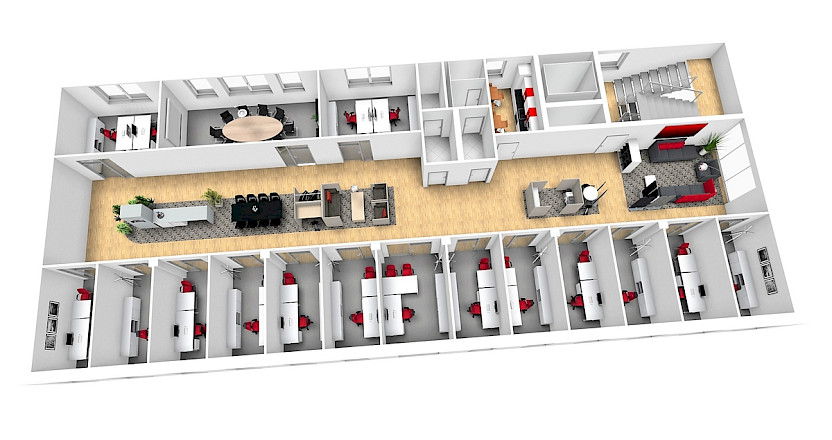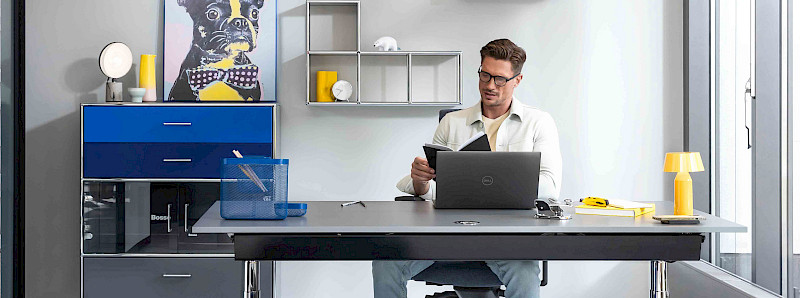“Combi offices typically combine elements of cellular and open-plan office layouts. The ‘work booths’ are usually occupied by one person each and are arranged around a shared space with meeting corners, filing areas, service points, kitchenettes, etc., separated from the communal zone by glass walls and doors.”
(Definition according to ASR A1.2)



Advantages of Combi Offices
GENERAL
- Allows for an effective combination of individual and team-based work
INDIVIDUAL WORKSPACES
- Enables relatively undisturbed and creative work
- High level of confidentiality, low acoustic disturbance
- Individual control of lighting and temperature
- Personal workspace design possible
MULTI-FUNCTIONAL ZONE
- Sufficient space for spontaneous communication as well as team and project work
- Flexibility in organising daily work routines
- Adaptability for needs-based redesign of shared communication and storage areas
Disadvantages of Combi Offices
- Limited storage space at individual workstations
- Possible visual distractions due to activity in the shared zone
- Lack of natural light in the multi-functional area
According to ASR A1.2, only rooms may be used that provide at least 8 m² for the first workstation, plus a minimum of 6 m² for each additional workstation.
In addition, a minimum air volume of 12 m³ per employee must be ensured.
(Note: These requirements do not apply to meeting and training rooms.)
Our tip: The success of a combi office largely depends on the design of the multi-functional zone. Traditionally, this area is used for informal discussions in small groups and spontaneous communication. But there are alternatives – why not create a coworking area? You’ll find inspiration in the Co-Areas of the IBA Forum showrooms.
The cover image of this article is taken from the showroom of the office furniture brand Dauphin.





